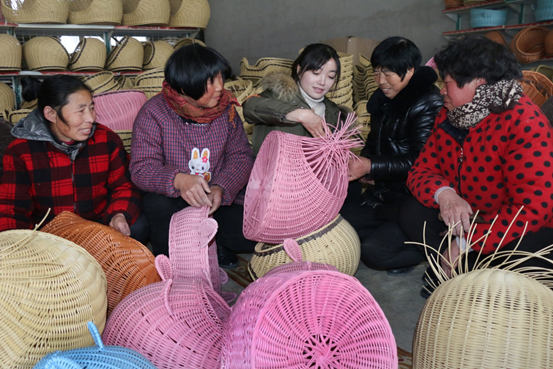

Thanks to decades of consistent efforts to fight desertification, Kubuqi Desert has become a masterpiece of China’s ecological construction and offers a solution for global desertification control.
The desert in north China's Inner Mongolia Autonomous Region covers an area of 18,600 square kilometers. It was once the source of frequent sandstorms hitting Beijing and Tianjin.

The photo shows the liquorice health industrial park of Elion Resources Group Limited in Kubuqi Desert. The desert, situated in the north of Erdos, north China’s Inner Mongolia Autonomous Region, is the country’s 7th largest desert. It used to be a source region of sandstorms. Thanks to the joint efforts of local government, enterprises, and farmers and herdsmen over the past decades, a bunch of effective desertification control techniques have been developed. (Photo from Xinhua News Agency)
However, the desert has experienced a historical change in beating desertification through afforestation.
Over the past three decades, Elion Resources Group has reclaimed about 6,460 square kilometers of sand, helping sequester 15.4 million metric tons of carbon, conserve 24.38 billion cubic meters of water resource, and produce 18.3 million metric tons of oxygen.
Today, the levels of forestation and green coverage in the region have jumped to 15.7 and 53 percent, respectively. The regional climate has been changed and people have become better-off thanks to ecological improvement.
The success of the greening project should be attributed to the joint efforts of local government, Elion Group and local people.
Over the past 30 years, the group has invested over 3 billion yuan ($447 million) to plant trees and grass in Kubuqi Desert, and 30 billion yuan to develop industries there.
The group allocated 10 to 20 percent of its business profits to tame sand in the first 10 years. In the second decade, while funding the place to fight against sand, the group also helped the latter cultivate its own industries. In the third 10 years, Kubuqi embraced its own industries.
After an arduous period of experiment, Elion Group has developed a “1+6” circular system by adhering to the mode of industry-based ecologicalization and ecology-based industrialization.
The model has not only made the natural environment better, but also cultivated industries to improve the lives of local herdsmen through practices such as desert restoration, ecological animal husbandry, ecosystem health, ecotourism, ecological photovoltaic and ecological industry.
So far, the unique model has been spread across the country.
Elion Group has done more to soil erosion and wind-sand damage. In Ulan Buh Desert, the group planted shrubs, trees and grass to prevent the desert from encroaching the Yellow River to the southeast. It also increased the coverage of arable land to develop sustainable animal husbandry and ecotourism.
At the northern edge of Kubuqi Desert, a forest belt stretching 300 kilometers has been built to prevent desertification toward the Yellow River. The group has rolled out online tree-planting plus experience economy for desertification control.
In December 2018, the Kubuqi Desert ecological demonstration zone was named as an innovation base of desertification control by China’s Ministry of Ecology and Environment.
“We have not only changed the landscape of the desert, but also created sand control experiences,” Lyu Tao, executive director of the Elion Kubuqi Desert Research Institute, adding that 343 scientific and technological innovations on curbing desertification were made over the past 30 years.
In recent years, the Kubuqi model has also been introduced to China’s Tibet Autonomous Region, and Qinghai, Hubei and Gansu provinces, as well as countries and regions along the Belt and Road.
Kubuqi Desert sets an example for successful desertification control, which has been widely endorsed by the international community.
China has set a good example in tackling climate change, and the initiative from China’s private sector has set a model for the world to follow, said Jorge Chediek, envoy of United Nations (UN) Secretary-General on South-South Cooperation and director of the UN Office for South-South Cooperation on December 12, 2018, who gave a thumb up to the global action on increasing the carbon sequestration on desertified land.
At present, China is broadly spreading its desertification schemes represented by the Kubuqi model along the Belt and Road.
Wang Wenbiao, chairman of the Elion Resources Group, said that the company would continue its efforts and enhance technological innovation to curb desertification, adding that they would also share with the world their experiences, technology, model and philosophy of desertification control.
“If we turn 10 percent of the world’s deserts into forests in the next 10 years, we could increase 100,000 tons of carbon sink and 150,000 tons of water conversion, and lift over 100 million people out of poverty,” Wang noted.
 Fire brigade in Shanghai holds group wedding
Fire brigade in Shanghai holds group wedding Tourists enjoy ice sculptures in Datan Town, north China
Tourists enjoy ice sculptures in Datan Town, north China Sunset scenery of Dayan Pagoda in Xi'an
Sunset scenery of Dayan Pagoda in Xi'an Tourists have fun at scenic spot in Nanlong Town, NW China
Tourists have fun at scenic spot in Nanlong Town, NW China Harbin attracts tourists by making best use of ice in winter
Harbin attracts tourists by making best use of ice in winter In pics: FIS Alpine Ski Women's World Cup Slalom
In pics: FIS Alpine Ski Women's World Cup Slalom Black-necked cranes rest at reservoir in Lhunzhub County, Lhasa
Black-necked cranes rest at reservoir in Lhunzhub County, Lhasa China's FAST telescope will be available to foreign scientists in April
China's FAST telescope will be available to foreign scientists in April "She power" plays indispensable role in poverty alleviation
"She power" plays indispensable role in poverty alleviation Top 10 world news events of People's Daily in 2020
Top 10 world news events of People's Daily in 2020 Top 10 China news events of People's Daily in 2020
Top 10 China news events of People's Daily in 2020 Top 10 media buzzwords of 2020
Top 10 media buzzwords of 2020 Year-ender:10 major tourism stories of 2020
Year-ender:10 major tourism stories of 2020 No interference in Venezuelan issues
No interference in Venezuelan issues
 Biz prepares for trade spat
Biz prepares for trade spat
 Broadcasting Continent
Broadcasting Continent Australia wins Chinese CEOs as US loses
Australia wins Chinese CEOs as US loses